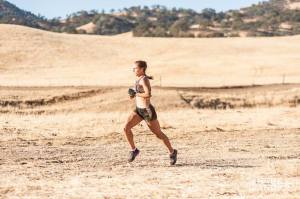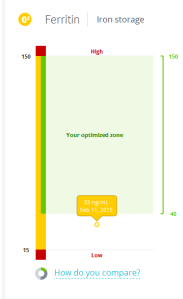Have you started creating your personal guide to health and performance? I’ve used a few tools to work toward creating my athlete user manual. 1) Inside Tracker Biomarker Analysis, 2) Body composition testing, 3) Heart rate monitored test effort, 4) Keeping a training log, and 5) Identifying my physical strengths, weaknesses, and imbalances. In my last post I talked about how InsideTracker and EnduroPacks are helping me optimize health, recovery, and performance through nutrition and vitamins. Today let’s focus on how we can track our training and our body’s response to training.
Biomarkers and bloodwork are a great way of getting a picture of what’s happening in your body, but it’s also important to have easy methods of tracking the stresses on your body and how your body is responding to training on a more regular basis.
Heart rate is a good indicator of how hard the body is working. When we exercise, heart rate increases to supply the body with the blood flow and oxygen it needs to meet the increased metabolic demands. The tissues need blood flow and oxygen not only when we’re exercising, but also during rest in order to help the body repair and recover. Resting heart rate can provide a glimpse into how hard the body is working during resting state and how well recovered the body is. By checking your heart rate in the morning, when you first sit up in bed and before drinking your coffee, you can monitor your recovery throughout the year. If resting heart rate is elevated for a few days in a row, this likely indicates your body needs some down time to fully recover from the stresses being placed on it. It’s important to remember that the body doesn’t necessarily distinguish between stresses coming from training, work, family, school, etc. Stresses accumulate from many different sources and affect other areas of your life. Work and family stress can impact your ability to perform well in training and recover from workouts.
Measuring heart rate during workouts can serve several purposes: 1) Identify training intensity zones, 2) Monitor changes in fitness in response to training, 3) Indicate level of recovery. There are specific physiological tests that can be used to correlate different training paces and intensities to heart rate so that you know what intensity, pace, or heart rate you should train at to target specific types of training (easy/recovery, aerobic, threshold, anaerobic, VO2max). By using heart rate, we can also translate these training zones to different environmental conditions like weather, terrain, or elevation. Leading up to our trip to Flagstaff, Arizona for high altitude training, we performed a heart rate test where we ran a mile on the track at a specific pace and recorded our heart rate for that effort. This gave us information about what our heart rate should be for a similar effort in Flagstaff. We will also use this information to see how our fitness level has changed when we return to Eugene in a couple weeks.
Because our bodies aren’t able to saturate hemoglobin with oxygen as effectively during acute high altitude exposure, the heart has to pump faster to supply adequate oxygen. During my first workout in Flagstaff, I used heart rate as an indicator of approximately what intensity/pace I should maintain to achieve a t hreshold effort. This led to a successful workout! I used the same method in another workout to target threshold effort. Because of the difference in terrain and weather, threshold pace was slightly different than in the previous workout but using heart rate allowed me to hit the right intensity level.
hreshold effort. This led to a successful workout! I used the same method in another workout to target threshold effort. Because of the difference in terrain and weather, threshold pace was slightly different than in the previous workout but using heart rate allowed me to hit the right intensity level.
I haven’t used heart rate monitoring extensively, but here is an interesting piece about how heart rate monitoring can help reduce injury and optimize performance even in team sports:
Everybody responds a little differently to training and clearly, heart rate is a great physiological marker of what’s going on in the body. But there are a lot of other important pieces of information that we can track to help us optimize training. A training log can provide a simple way to track objective components of training volume, intensity, and progress, as well as subjective information like how we’re feeling, what’s going well, and what we’re struggling with.
Training logs can come in many different forms, including a hand-written journal, an online tracking program, or a living document saved on your computer. You should find what works best for you. But here are some examples of how I use my training log. My training log is an Excel spreadsheet where I can record date, training, mileage, cross-training, and other information.
The great thing about Excel and other similar programs is that it’s searchable. For example, when I have had little flare ups of plantar fascia pain, I can use the search feature to look back in my log to see what caused it in the past and what helped resolve it.
With the variety of races I’ll be doing this year, including road, track, trail, and obstacle races, it’s also nice to be able to search for different races to see what I was doing to train leading up to successful races like the Warrior Dash World Championship or Xterra Trail Run Worlds.
I’m not super tech savvy, so I haven’t explored many of the other options for training logs, but some other ones to check out include Nike+, Strava, RunTrackR, FitBit, or Lauren Fleshman’s Believe Training Log. The goal should be to find a resource that 1) You will use consistently, 2) Provides the information you find most helpful.
What methods do you use to track your training?
Here is an Excel Spreadsheet you can download and use as a training log if you don’t already have a method of tracking your training: Training Log Sample





































